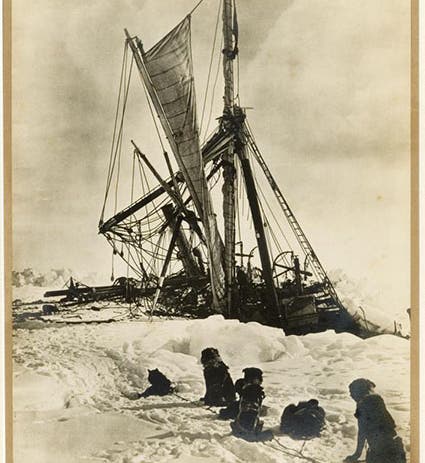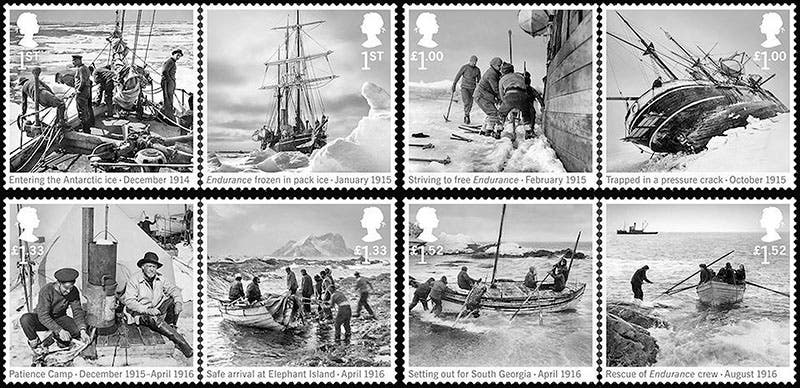Scientist of the Day - Frank Hurley
Frank Hurley, an Australian photographer, was born Oct. 15, 1885. Hurley was the photographer on Ernest Shackleton's trans-Antarctic expedition of 1914. Their ship, the Endurance, got no further than the Weddell Sea, where it was frozen in for some months and eventually crushed by the ice. In one of the most famous survival sagas of the 20th century, Shackleton and his men managed to sledge their life boats to the edge of the icepack and then float to temporary refuge on Elephant Island, one of the small uninhabitable bits of land around the Antarctic Peninsula. From there, Shackleton and five of the crew sailed one of the boats, the James Caird, more than 900 miles by dead reckoning to South Georgia, where help was obtained. Incredibly, no lives were lost. Much of the gripping appeal of the story comes from Hurley's photographs, which captured the destruction of the Endurance, the bivouacs on the icepack, the refuge on Elephant island, and even the James Caird, sailing off to her uncertain future through the pack (Hurley stayed on the island). Hurley had to sacrifice many of his glass-plate negatives when they had to lighten loads before beginning their trek, but he saved several hundred, soldered into tin canisters to protect them from the elements, and they are incredibly dramatic, especially when you consider the conditions under which they were taken. In 1999, the American Museum of Natural History unveiled an exhibition of prints taken from Hurley's original glass negatives. Most of them were included in a narrative written by the exhibition curator, Caroline Alexander, called The Endurance: Shackleton's Legendary Antarctic Expedition, a book well worth reading, even though it is hard to turn away from the photographs.

Frank Hurley, studio portrait, unknown date (pbs.org)
In normal times we would fill this post with images, at least 6 of them, but these are not normal times, and we are restricted to two, and in exceptional cases, three. This is one of those exceptional days. Our first photograph was taken in November, 1915, and shows the Endurance being crushed by the ice. This print was made and signed by Hurley himself. Most other prints you see are modern ones, made from the glass negatives held by the Royal Geographical Society. That is the case with this one, showing the launching of the James Caird, and this one, a photograph taken at night of the Endurance in the ice. At the link you can see both the negative, on the right, and the print on the left. Hurley tells us that he needed 20 strobes, each flashed individually, 10 for the ship and 10 for the ice floes, to get this image. And then he did it all over again from a different angle. Finally, we link to a photograph, presumably not taken by Hurley, of him and his 80-pound camera, high in the rigging of the Endurance, stopping at nothing to get the shot he wanted.
Hurley’s photographs are not as easy to find on the internet as they ought to be, although if you are persistent, you can locate some more. Fortunately, 8 of them were made available in small format in 2016 by British Royal Mail, which commemorated the centennial of the crew’s survival with 8 stamps, all based on Hurley photographs (third image). In the stamp at bottom left, that is Hurley feeding a blubber stove, with Shackleton next to him. Our other image is a studio shot, but it is our favorite portrait of Hurley (second image). Dr. William B. Ashworth, Jr., Consultant for the History of Science, Linda Hall Library and Associate Professor emeritus, Department of History, University of Missouri-Kansas City. Comments or corrections are welcome; please direct to ashworthw@umkc.edu.







